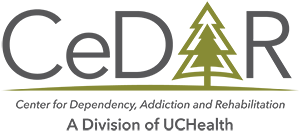ALCOHOL AND ITS EFFECTS
Most drugs of abuse act through relatively straight-forward mechanisms on the brain. Cocaine and methamphetamine directly trigger the dopamine system, which has vital importance for pleasure and reinforcing behaviors. Opioids painkillers and heroin act on the mu-opioid system in the brain. This is responsible for pain relief, sleep connections, and secondary dopamine transmission. Nicotine acts on the cotinine receptors in the brain.
Alcohol Complexity
Alcohol acts in more diffused and complex ways than these above drugs, putting pressure on multiple different neurological systems. We discussed one of these systems, the GABA/Glutamate pathway, in our last session. Another vital system utilized in addiction recovery treatment is the opioid painkiller system connected to alcohol processing.
In 1982, the Food and Drug Administration (FDA) approved the medication Naltrexone, a mu-opioid blocker, for the treatment of opioid dependence. Pure behavioralism is the rationale for this approach. We could block the effects of heroin or other opioids on the brain. Behaviors would essentially extinguish due to no attached reward to the drug use. Animal models showed that mice, when administered naltrexone or a similar medication, naloxone, largely decreased alcohol consumption patterns. These accidental findings led to further research on the topic. Eventually, the FDA approved naltrexone for the treatment of alcoholism in 1994.
The Opioid System
The initial mechanism of action for these findings was unclear. How was the opioid system in the brain connected to alcohol use. There is not an entire understanding of the full mechanism. However, repeated research studies matched against placebos have shown naltrexone to be a Tier 1 medication in the treatment of alcoholism. The postulated mechanism, as originally cited in a 1997 paper[1], is as follows:
- The mu-opioid system in the brain connects to the dopaminergic mesolimbic pathway in the nucleus accumbens.
- This system releases less dopamine by blocking opioid activity.
- Dopamine functions as the primary neurotransmitter responsible for addictive patterns and reinforcement.
Naltrexone treatment targets the actual reward pathways involved in the disease of alcoholism. Multiple studies have demonstrated its efficacy in reducing cravings to drink alcohol, decreasing the number of heavy drinking days per month, and increasing the number of full abstinence days in per month.
- This is a medication you need to put on the table for your recovery. The combination of efficacy and general safe profile makes it a ‘high expected-value’ treatment approach that may be useful to you moving forward.
The COMBINE Study
In 2006 multiple sites attempted to analyze therapy options and medication options for the treatment of alcoholism. They studied 1,383 people in the field of addiction. [2] The study reviewed people with alcoholism in outpatient settings to determine which medication approaches offered the greatest benefits as well as reviewed structured addiction-focused therapies as compared to standard medication-management approaches provided by primary care physicians.
There were multiple important findings from the COMBINE study which are highly useful as we work to design appropriate treatment plans for people.
- Naltrexone was associated with a clinically significant reduction in cravings to drink, reduction in heavy drinking days, and more days of abstinence when combined with a medical model emphasizing acceptance of alcoholism disease and taking of the naltrexone daily.
- Acamprosate (another FDA medication used to treat alcoholism) faired poorly and did not fully differentiate from placebo medication.
- The medical model of brief counseling was in some cases superior to more structured addiction treatment services.
- The group in the study which received specialty addiction counseling without medications showed the poorest outcomes of the different paths.
How the COMBINE Study Can Help
Evidence from the COMBINE study can guide your decision to seek treatment. Advanced addiction counseling offered some benefit for people, but simple approaches with the use of Medication-Assisted Treatment (MAT) showed the best, most efficient outcomes. Our goals in presenting this information to you are that if you wanted the most ‘Bang for the Buck’ in terms of addiction recovery care, take note of the COMBINE study and use the science to improve your health!
[1] Spanagel R, Zieglgansberger W. (1997). Anti-craving compounds for ethanol: New pharmacological tools to study addictive processes Trends in Pharmacological Sciences 18 2 54-59. [Reference list]
[2] Anton RF, O’Malley SS, Ciraulo DA, et al. Combined pharmacotherapies and behavioral interventions for alcohol dependence: The COMBINE study: A randomized controlled trial. JAMA. 2006;295(17):2003–17.
Read more CeDAR Education Articles about Alcohol and Its Effects.




